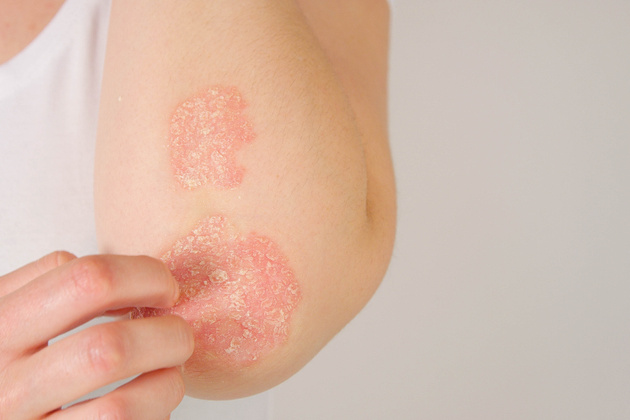What is Psoriasis? What are the symptoms and treatment methods?
Psoriasis, a common skin disease, has a prevalence of 1-3% in our country. The disease, which manifests itself with exacerbation attacks, is seen at equal rates in men and women. The skin disease, which is characterized by white-gray flaking that resembles psoriasis, can occur at any age, but it commonly begins in the 20s. While it is common in women during adolescence, pregnancy and lactation, it also occurs in men during adolescence and periods of socio-economic problems.

What is Psoriasis?
Skin cells form in the deepest layer of the skin. Cells that gradually advance towards the skin surface die here. They break down and fall out with the activities performed during the day. The shed skin cells are replaced by new cells formed in the underlying tissue. The process of skin cells forming and shedding takes approximately 28 days. In psoriasis, this process is quite rapid. In the disease, which progresses approximately 10 times faster than the normal process, the shedding of skin cells takes between 2-6 days. In this case, dead skin cells accumulate on the surface. As the skin enters a vicious cycle, typical appearance of pearl-coloured flaking and crusting occurs due to excessive production and shedding.
What Causes Psoriasis?
The cause of psoriasis, which is a chronic disease, is not exactly clear. It is not contagious because it is not a disease caused by any bacteria or viruses. The most curious question regarding the disease is whether psoriasis is genetic. One of the causes of psoriasis is the genetic predisposition to the disease. Even if the mother or father does not have psoriasis, having the disease in previous generations may cause it to occur. The incidence of psoriasis is higher in people with extreme sadness, stress and depression. Weakening of the immune system, excessive alcohol and cigarette use, and high weight are among the factors that trigger the disease. In addition, psoriasis may occur as a side effect of iodide, antimalarial, beta blocker and high blood pressure medications.
Psoriasis Symptoms
- Pearl-colored flaking and crusting, especially in the knee and elbow areas. These skin lesions can also be observed in the genital area, nails and scalp. Also, gray-white skin rashes and crusts on red spots on the arms, legs, palms and soles of the feet
- Pits on the nails, thickening and yellow discoloration, swelling and redness around the nails
- Skin dryness, burning sensation, itching and bleeding
- Pain, swelling and redness in the joints
Treatment of Psoriasis
Psoriasis, which is a lifelong disease, can be controlled with appropriate treatment methods. Early diagnosis of the disease makes it easier to control it. However, if the rash and flaking cover 10% of the body skin, phototherapy or systemic treatment should be applied. Psoriasis treatment is personalized. The prevalence of the disease on the skin, the patient’s age, gender, and compliance with the treatment are important factors in choosing the treatment to be applied. If the rash and flaking are in a limited area, cream psoriasis medications or moisturizers are used. If the disease is widespread, drugs containing synthetic vitamin A, phototherapy and some cancer drugs can be applied.



